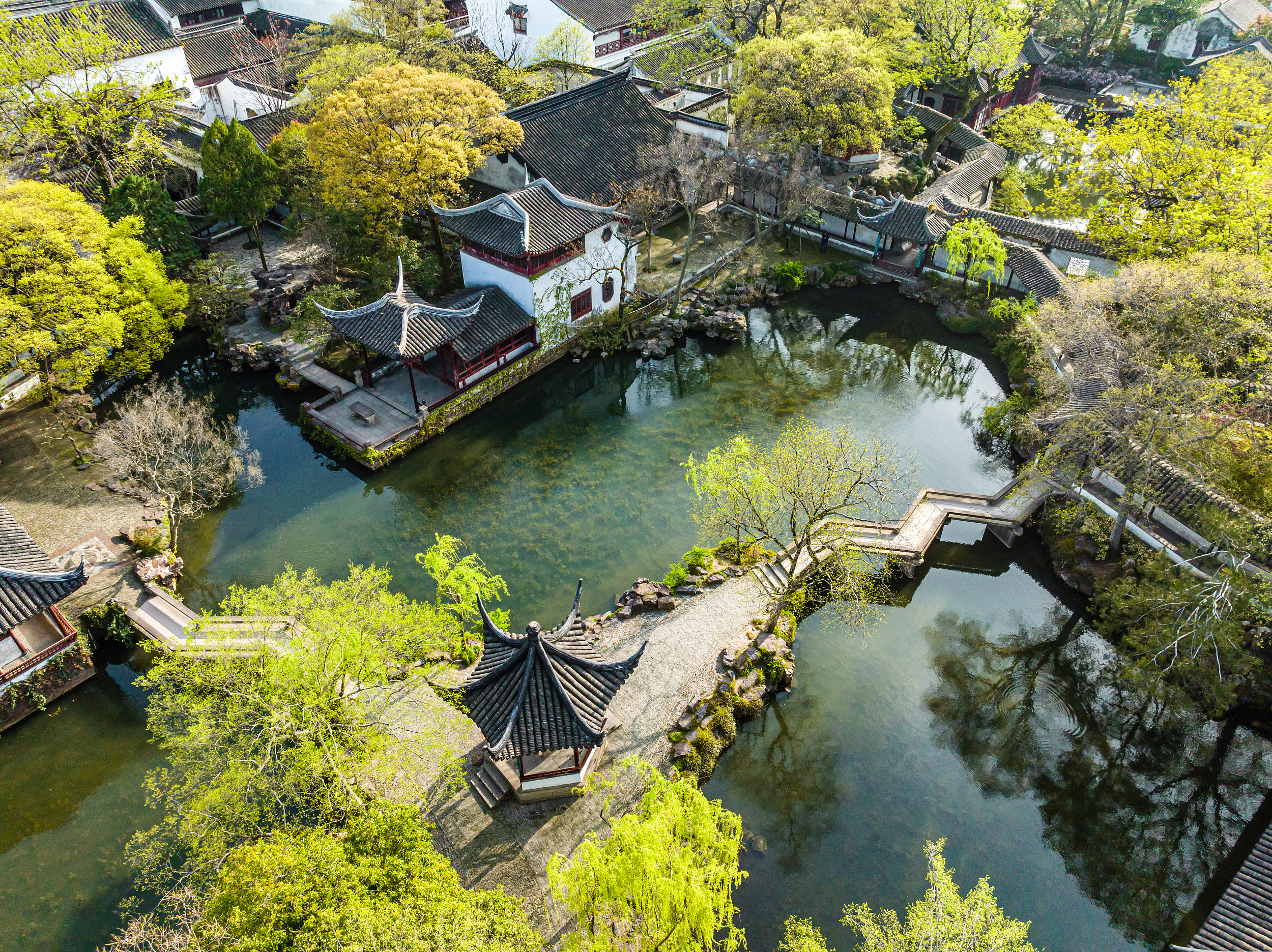
An?aerial?view?of?Humble?Administrator's?Garden.?(PHOTO:VCG)
By?BI?Weizi
The Classical Gardens located in the city of Suzhou, Jiangsu province, date back to the Spring and Autumn Period (770 to 476 BC) and are known for its miniature recreations of nature, reflecting the Chinese people's passion for integrating natural beauty into garden design.
Inspired by the hunting gardens built by the kings of the state of Wu, garden architects began designing private gardens around the 6th century, reaching a peak around the Ming and Qing dynasties. Today, there are more than 50 such gardens, nine of which have been inscribed on the UNESCO World Heritage List for "representing the development of Chinese landscape garden design over more than two thousand years."
Master gardeners of all dynasties have honed their skills in artistically simulating nature by adapting and utilizing the limited space given to them.
Classical Suzhou gardens, confined to the space of a single dwelling, were designed to be miniatures of nature. They incorporate elements such as water, stone, plants, and various types of architecture with literary and poetic significance, creating unique designs that had a profound impact on the development of garden art in both the East and the West.
These garden ensembles of architecture, rock formations, calligraphy, furniture and artistic decorations are a showcase of the highest artistic achievement in the eastern Yangtze River Delta, and they embody the essence of traditional Chinese culture.
The trio will conduct a series of experiments in fields such as life science, fluid physics, combustion science and materials science. Notably, this is the first time that fruit flies have been taken on a Chinese space mission as experimental subjects. What made scientists choose fruit flies? What experiment will they undergo?
